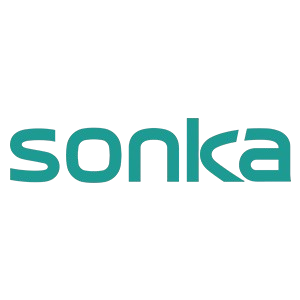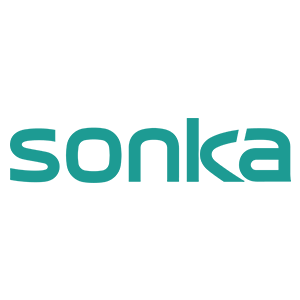Real-time health data has transformed the landscape of therapy outcomes by providing immediate insights into patient conditions. According to a study by the Journal of Telemedicine and e-Health, timely access to real-time data can significantly enhance clinical decision-making and improve recovery rates. By monitoring vital signs such as heart rate, blood pressure, and oxygen saturation, healthcare providers can promptly assess patient responses to treatment and make necessary adjustments. Additionally, integrating artificial intelligence (AI) technologies in health data analysis enables predictive analysis, alerting clinicians to potential complications before they develop, thus preemptively addressing health issues. This predictive capability can be crucial in preventing adverse incidents and tailoring therapies more effectively.
Incorporating body composition analysis into routine checkups offers a more comprehensive understanding of patient health. This method goes beyond traditional metrics by assessing factors like muscle mass, fat distribution, and hydration levels, which can influence treatment decisions. A study published in the American Journal of Clinical Nutrition highlighted that regular body composition assessments allow for the development of personalized treatment plans, subsequently enhancing patient satisfaction. By integrating this analysis into regular health evaluations, clinicians can set realistic health goals tailored to individual needs. Patients are thereby empowered to track their progress with a clearer understanding of their physical state, which fosters greater engagement and motivation in their treatment journey.
Self-service diagnostics represent a pivotal advancement in modern health therapy equipment, allowing patients to independently check their vital signs. This innovation helps reduce wait times significantly, enhancing the flow of patients in healthcare facilities. According to the Healthcare Information and Management Systems Society (HIMSS), implementing self-service diagnostics can decrease wait times by up to 50%. This efficiency not only alleviates patient congestion but also frees up healthcare staff to focus on more critical tasks, leading to improved resource allocation and patient care. As a result, healthcare facilities can operate more smoothly, ultimately improving the overall patient experience.
Cloud-based solutions have revolutionized the way patient data is shared across healthcare platforms, promoting seamless interoperability among diverse health systems. These solutions enable real-time data sharing, which is crucial for optimal patient management and care. A report by EHR Intelligence highlights how cloud solutions enhance collaboration among healthcare providers, leading to better-informed decisions during patient consultations. By ensuring that clinicians have access to the most current patient data, cloud-based solutions contribute significantly to the efficiency and accuracy of treatments. This innovative approach to data management ensures that healthcare providers can respond swiftly to patient needs, improving outcomes and overall patient satisfaction.
An interactive health check-in kiosk streamlines the patient registration process while simultaneously monitoring vital signs, ensuring efficiency during initial consultations. By reducing administrative tasks, these kiosks enhance patient engagement, leading to a more positive healthcare experience. Studies have shown that this technology significantly reduces the workload of healthcare staff, enabling them to focus on more critical aspects of patient care. Moreover, providing personal health data right from the onset fosters a deeper connection between patients and healthcare providers, ensuring informed and meaningful interactions.
Health screening stations equipped with pre-work alcohol testing ensure that employees are fit for duty, fostering a safer workplace environment. Such measures are supported by occupational health studies indicating that regular health screenings can reduce workplace accidents by up to 30%. By affirming employees' readiness, these stations do more than uphold safety standards—they showcase an organization's commitment to employee wellness and productivity. This dual approach not only protects workers but enhances overall organizational efficiency.
Multi-functional terminals that analyze body composition provide invaluable insights into patients' health metrics, aiding in the development of personalized health strategies. Evidence from research in Obesity Reviews supports that tailored fitness and nutrition plans, based on body composition, result in higher adherence and improved outcomes. These terminals empower individuals to track and understand their health metrics in real-time, thereby enhancing patient engagement and promoting a proactive approach to health management.
AI-powered scanners revolutionize diagnostics by conducting detailed full-body scans rapidly, effectively identifying potential health issues and enhancing patient outcomes. The integration of AI significantly boosts diagnostic accuracy, as affirmed by a recent study published in Nature Medicine. By employing state-of-the-art imaging technology, these scanners drastically reduce the diagnosis time, positively impacting treatment timelines and patient satisfaction. The adoption of such cutting-edge tools exemplifies the future of precision healthcare.
Telemedicine kiosks with integrated blood analysis capabilities provide patients with easy access to health services, significantly benefiting those in remote areas. The CDC reports that telemedicine can enhance care access for over half of patients in underserved communities. This feature ensures timely blood test results and facilitates prompt follow-ups, resulting in a marked improvement in patient experience and satisfaction. By bridging gaps in healthcare accessibility, such kiosks are pivotal in modern medical ecosystems.
Implementing automated health assessments in healthcare facilities can significantly streamline clinical workflows. This advancement enables healthcare providers to collect and analyze patient data with enhanced accuracy and efficiency. According to research conducted by the American Medical Association, deploying automated systems in healthcare can improve data capture rates by approximately 40%. This boost in data precision ensures that patient health metrics are reliably gathered, allowing for timely interventions. In turn, this leads to enhanced care quality and higher patient satisfaction, as healthcare professionals can promptly address potential health issues.
Comprehensive staff training on advanced monitoring capabilities is pivotal for utilizing therapy equipment effectively. By investing in education and development, healthcare facilities can ensure their staff maximizes technology benefits, ultimately improving patient interactions. The Joint Commission emphasizes that well-trained staff significantly enhance care delivery, which positively affects patient outcomes. Besides, regular training sessions foster professional growth, encouraging higher staff morale and reducing turnover rates. By equipping healthcare personnel with the knowledge to effectively use cutting-edge monitoring equipment, facilities can ensure efficient patient management and foster a more engaged healthcare environment.
Utilizing cloud analytics allows healthcare facilities to transform patient data into valuable insights regarding satisfaction levels and service quality. By leveraging advanced technology, healthcare organizations can analyze large datasets to uncover trends and patterns that might otherwise remain hidden. This data-driven decision-making approach, supported by cloud analytics, can lead to enhanced patient experiences, as illustrated in various case studies by the Health Management Academy. These studies demonstrate how data insights enable healthcare providers to tailor services more closely to patient needs, thus improving satisfaction scores. The implementation of these insights facilitates continuous tracking of patient satisfaction metrics, allowing for ongoing adjustments in service delivery.
Establishing feedback loops enables healthcare providers to consistently gather patient opinions about their care experiences, fostering a culture of continuous improvement within the organization. Feedback mechanisms ensure that patients feel heard and valued, leading to more personalized and responsive healthcare services. Research from the Beryl Institute highlights that healthcare organizations actively utilizing feedback mechanisms see a 20% improvement in patient-centered scores. By thoughtfully acting on the feedback received, organizations can adapt their services to meet evolving patient needs, thereby enhancing the overall care experience. This dynamic process not only improves satisfaction but also encourages patient loyalty and retention, vital components for success in patient-centric therapy.


Copyright © 2025 by Shenzhen Sonka Medical Technology Co., Limited - Privacy policy